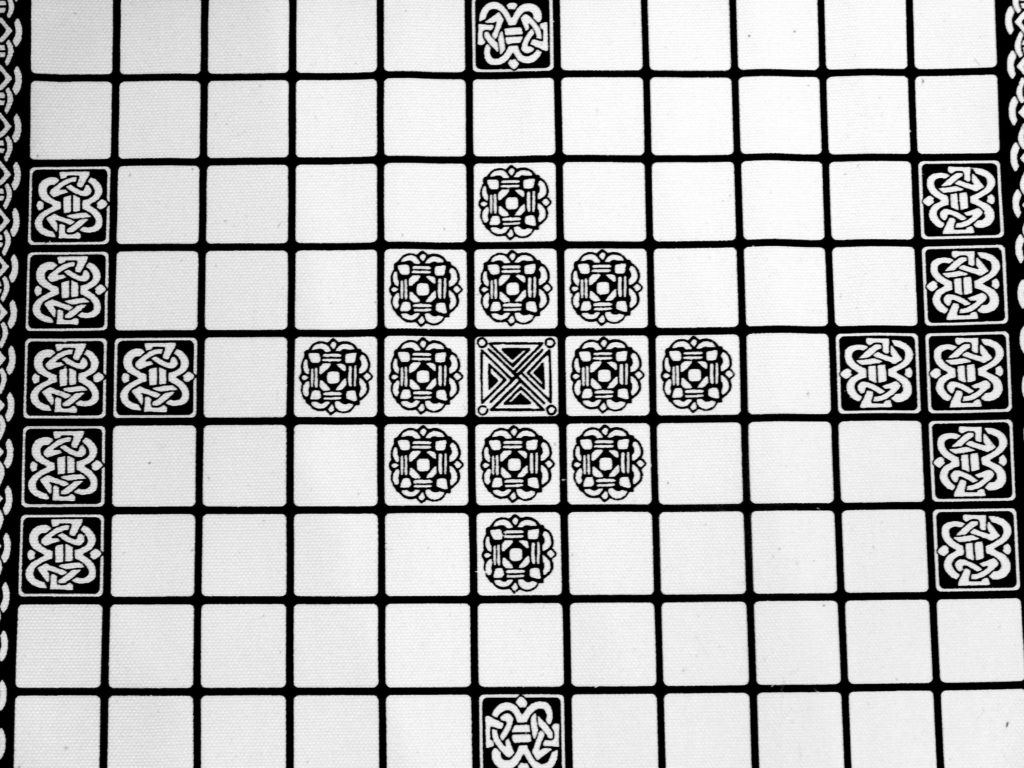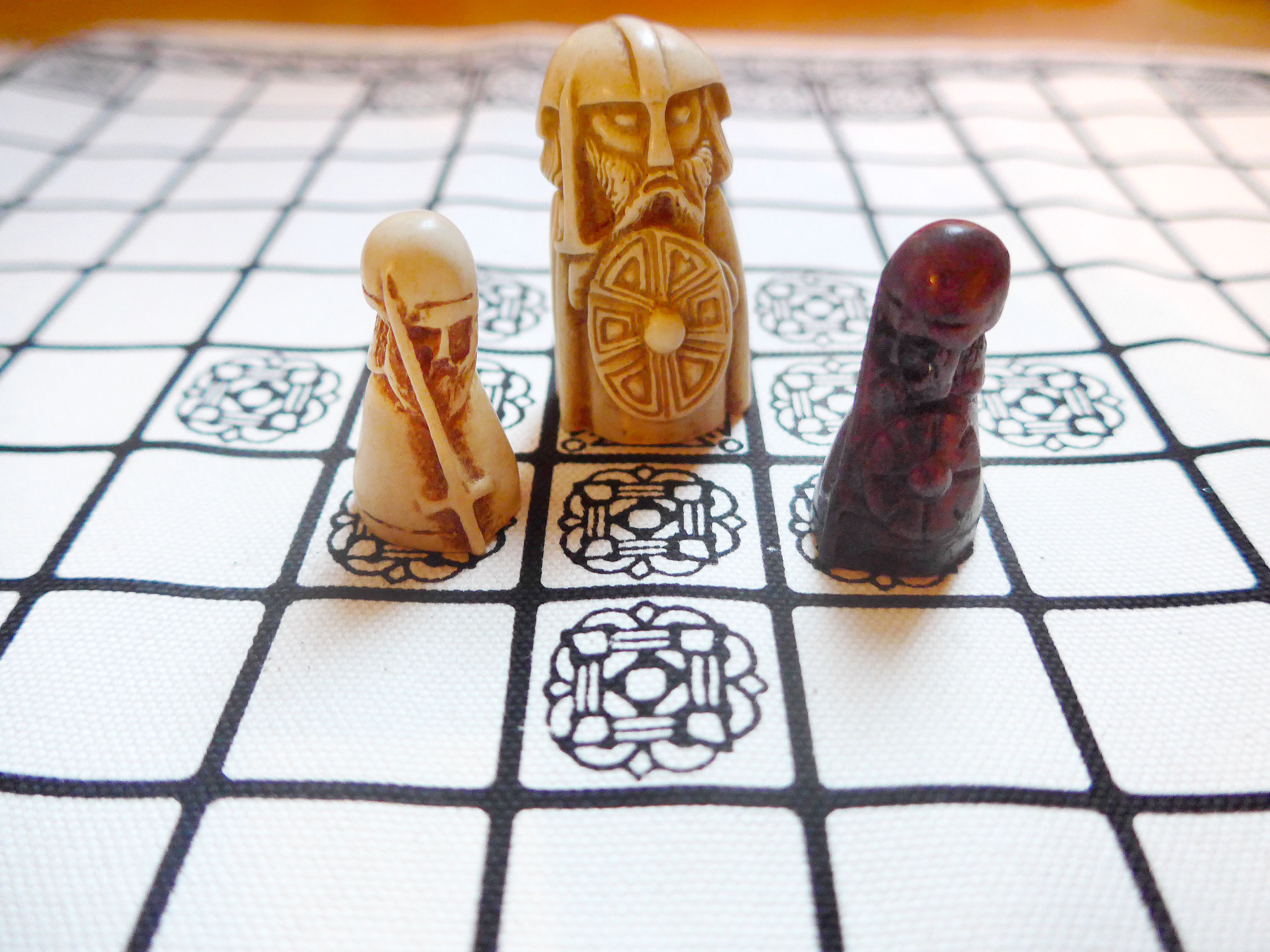While romanticized portrayals of Vikings might suggest they charged recklessly into battle, archaeology suggests the ancient raiders were slightly more scientific in their approach to warfare—for example, honing their tactical skills with board games such as hnefatafl. Known as “the King’s Table,” hnefatafl was played on a checkered board or cloth that has similarities to chess—yet it encompasses a more aggressive and versatile style of gameplay.
“In hnefatafl one player had a king, centrally placed on the board, defended by warriors. The other player had pawns positioned around the edges of the board. The first player won if he got his king to one of the four corner squares,” explained Dr. David Caldwell, president of the Society of Antiquaries of Scotland, in an interview with Military History.
One unique feature about hnefatafl is that—as in wartime—attack and defense alternates between players. During each game, one player defends a centrally located position, while the other player attacks. Thus the game experience is completely different depending on which role a player takes. Roles can be reversed to give players a greater breadth of experience, allowing one to think from an opponent’s point of view and practice offense and defense.
“People think that games were for leisure, but they were not. They were a way of practicing strategical and tactical warfare,” according to Viking expert Dr. Charlotte Hedenstierna-Jonson of Uppsala University in a March 2019 lecture. “There is a very important connection between martial life and gaming.”

Traces of the board game have often been found in Viking burial sites, including ships. The game has usually appeared in the graves of men with other evidence suggesting their identities as warriors or leaders. In the early 2000s, the game pieces were found among 40 male Viking warriors from Sweden buried in Estonia; the leader of the group, signified by his “ring sword,” had been buried with hnefatafl “king” piece placed ceremonially in his mouth. The game’s presence in male graves “suggests that there was a recognized connection between [board games] and the warrior ideology of elite men,’” according to historian Helene Whittaker in Atlas Obscura.
Yet the Vikings did not attribute a grasp of military strategy to men only, according to archaeological evidence. A famed tomb called Bj 581, excavated at Birka, Sweden, contained the remains of an especially “mighty warrior”—interred on a lofty height next to a military garrison and marked with a boulder, the tomb of the deceased was filled with a rich array of battle gear, including a double-handed axe, fighting knife, lances, a sword, two shields and two bridled horses. Clearly the grave belonged to someone whom the Vikings felt deserved recognition in the art of warfare. Historians had always presumed this “professional warrior” was male—however, thorough forensic examinations confirmed it was actually a woman.
The woman, like other Viking war chiefs, was buried with a hnefatafl game. The game included 28 pieces, among them a “king” and three dice. The corpse appears to have been entombed in a sitting position. The strategy game had been placed on her lap. The inclusion of the game in her grave suggests that, like many of her male contemporaries, she had made “strategic decisions, that she was in command,” Hedenstierna-Jonson, leader of the research team investigating Bj 581, told The New York Times in 2017.
Game pieces were often made of expensive and fine materials, including whale bone, glass and amber. Despite this opulence, Caldwell suggests the game was more common than one might imagine. “Games like hnefatafl and chess may have been introduced amongst the elite but there is a plenty of evidence that they ended up being played by all ranks in society,” he said.
Caldwell estimates that hnefatafl probably first appeared in Scotland during the Iron Age. A double-sided game board, scratched on slate, was found at Jarlshof in Shetland at the site of a former Viking settlement. Scandinavian influence found its way into Scotland’s culture through settlements in the Orkney, Shetland, Caithness and Sutherland regions, as well as the Western Isles. The famous Lewis chessmen discovered in Scotland may have been used to play hnefatafl.
“We reckon that many of the Lewis pieces were used for hnefatafl as well as chess,” said Caldwell. “In hnefatafl there was a need for a king, pawns and other warriors to defend the king.”
The Vikings also left a strong military mark on Scotland—including a warrior ethos and approaches to battle.
“Much of the equipment, including ships, and weaponry used by medieval Scots, especially in the Western Isles and West Highlands, derived from Viking prototypes,” Caldwell told Military History. “Medieval society in those parts of Scotland was heavily militarized, and that was probably a way of life ultimately derived from Viking times.”
Anyone curious to try hnefatafl will be relieved to know that the game still exists in replica form and is available to purchase. Rules come with game sets and are also available online. MH





